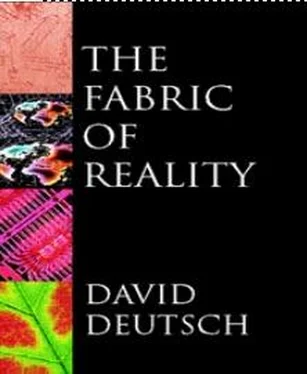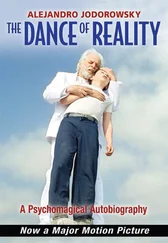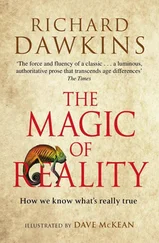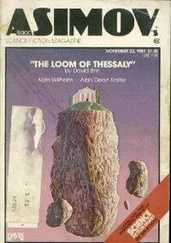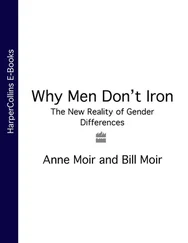David Deutch - The Fabric of Reality
Здесь есть возможность читать онлайн «David Deutch - The Fabric of Reality» весь текст электронной книги совершенно бесплатно (целиком полную версию без сокращений). В некоторых случаях можно слушать аудио, скачать через торрент в формате fb2 и присутствует краткое содержание. ISBN: , Жанр: Физика, Философия, на английском языке. Описание произведения, (предисловие) а так же отзывы посетителей доступны на портале библиотеки ЛибКат.
- Название:The Fabric of Reality
- Автор:
- Жанр:
- Год:неизвестен
- ISBN:0-7139-9061-9
- Рейтинг книги:4 / 5. Голосов: 2
-
Избранное:Добавить в избранное
- Отзывы:
-
Ваша оценка:
- 80
- 1
- 2
- 3
- 4
- 5
The Fabric of Reality: краткое содержание, описание и аннотация
Предлагаем к чтению аннотацию, описание, краткое содержание или предисловие (зависит от того, что написал сам автор книги «The Fabric of Reality»). Если вы не нашли необходимую информацию о книге — напишите в комментариях, мы постараемся отыскать её.
The Fabric of Reality — читать онлайн бесплатно полную книгу (весь текст) целиком
Ниже представлен текст книги, разбитый по страницам. Система сохранения места последней прочитанной страницы, позволяет с удобством читать онлайн бесплатно книгу «The Fabric of Reality», без необходимости каждый раз заново искать на чём Вы остановились. Поставьте закладку, и сможете в любой момент перейти на страницу, на которой закончили чтение.
Интервал:
Закладка:
I have presented only a sketch of the arguments of Penrose and his opponents. The reader will have gathered that essentially I side with the opponents. However, even if it is conceded that Penrose’s Gödelian argument fails to prove what it sets out to prove, and his proposed new physical theory seems unlikely to explain what it sets out to explain, Penrose is nevertheless right that any world-view based on the existing conception of scientific rationality creates a problem for the accepted foundations of mathematics (or, as Penrose would have it, vice versa). This is the ancient problem that Plato raised, a problem which, as Penrose points out, becomes more acute in the light of both Gödel’s theorem and the Turing principle. It is this: in a reality composed of physics and understood by the methods of science, where does mathematical certainty come from? While most mathematicians and computer scientists take the certainty of mathematical intuition for granted, they do not take seriously the problem of reconciling this with a scientific world-view. Penrose does take it seriously, and he proposes a solution. His proposal envisages a comprehensible world, rejects the supernatural, recognizes creativity as being central to mathematics, ascribes objective reality both to the physical world and to abstract entities, and involves an integration of the foundations of mathematics and physics. In all those respects I am on his side.
Since Brouwer’s, and Hilbert’s, and Penrose’s and all other attempts to meet Plato’s challenge do not seem to have succeeded, it is worth looking again at Plato’s apparent demolition of the idea that mathematical truth can be obtained by the methods of science.
First of all, Plato tells us that since we have access only to imperfect circles (say) we cannot thereby obtain any knowledge of perfect circles. But why not, exactly? One might as well say that we cannot discover the laws of planetary motion because we do not have access to real planets but only to images of planets. (The Inquisition did say this, and I have explained why they were wrong.) One might as well say that it is impossible to build accurate machine tools because the first one would have to be built with inaccurate machine tools. With the benefit of hindsight, we can see that this line of criticism depends on a very crude picture of how science works — something like inductivism — which is hardly surprising, since Plato lived before anything that we would recognize as science. If, say, the only way of learning about circles from experience were to examine thousands of physical circles and then, from the accumulated data, to try to infer something about their abstract Euclidean counterparts, Plato would have a point. But if we form a hypothesis that real circles resemble the abstract ones in specified ways, and we happen to be right, then we may well learn something about abstract circles by looking at real ones. In Euclidean geometry one often uses diagrams to specify a geometrical problem or its solution. There is a possibility of error in such a method of description if the imperfections of circles in the diagram give a misleading impression — for example if two circles seem to touch each other when they do not. But if one understands the relationship between real circles and perfect circles, one can, with care, eliminate all such errors. If one does not understand that relationship, it is practically impossible to understand Euclidean geometry at all.
The reliability of the knowledge of a perfect circle that one can gain from a diagram of a circle depends entirely on the accuracy of the hypothesis that the two resemble each other in the relevant ways. Such a hypothesis, referring to a physical object (the diagram), amounts to a physical theory and can never be known with certainty. But that does not, as Plato would have it, preclude the possibility of learning about perfect circles from experience; it just precludes the possibility of certainty. That should not worry anyone who is looking not for certainty but for explanations.
Euclidean geometry can be abstractly formulated entirely without diagrams. But the way in which numerals, letters and mathematical symbols are used in a symbolic proof can generate no more certainty than a diagram can, and for the same reason. The symbols too are physical objects — patterns of ink on paper, say — which denote abstract objects. And again, we are relying entirely upon the hypothesis that the physical behaviour of the symbols corresponds to the behaviour of the abstractions they denote. Therefore the reliability of what we learn by manipulating those symbols depends entirely on the accuracy of our theories of their physical behaviour, and of the behaviour of our hands, eyes, and so on with which we manipulate and observe the symbols. Trick ink that caused the occasional symbol to change its appearance when we were not looking — perhaps under the remote control of some high-technology practical joker — could soon mislead us about what we know ‘for certain’.
Now let us re-examine another assumption of Plato’s: the assumption that we do not have access to perfection in the physical world. He may be right that we shall not find perfect honour or justice, and he is certainly right that we shall not find the laws of physics or the set of all natural numbers. But we can find a perfect hand in bridge, or the perfect move in a given chess position. That is to say, we can find physical objects or processes that fully possess the properties of the specified abstractions. We can learn chess just as well with a real chess set as we could with a perfect Form of a chess set. The fact that a knight is chipped does not make the checkmate it delivers any less final.
As it happens, a perfect Euclidean circle can be made available to our senses. Plato did not realize this because he did not know about virtual reality. It would not be especially difficult to program the virtual-reality generators I envisaged in Chapter 5with the rules of Euclidean geometry in such a way that the user could experience an interaction with a perfect circle. Having no thickness, the circle would be invisible unless we also modified the laws of optics, in which case we might give it a glow to let the user know where it is. (Purists might prefer to manage without this embellishment.) We could make the circle rigid and impenetrable, and the user could test its properties using rigid, impenetrable tools and measuring instruments. Virtual-reality callipers would have to come to a perfect knife-edge so that they could measure a zero thickness accurately. The user could be allowed to ‘draw’ further circles or other geometrical figures according to the rules of Euclidean geometry. The sizes of the tools, and the user’s own size, could be adjustable at will, to allow the predictions of geometrical theorems to be checked on any scale, no matter how fine. In every way, the rendered circle could respond precisely as specified in Euclid’s axioms. So, on the basis of present-day science we must conclude that Plato had it backwards. We can perceive perfect circles in physical reality (i.e. virtual reality); but we shall never perceive them in the domain of Forms, for, in so far as such a domain can be said to exist, we have no perceptions of it at all.
Incidentally, Plato’s idea that physical reality consists of imperfect imitations of abstractions seems an unnecessarily asymmetrical stance nowadays. Like Plato, we still study abstractions for their own sake. But in post-Galilean science, and in the theory of virtual reality, we also regard abstractions as means of understanding real or artificial physical entities, and in that context we take it for granted that the abstractions are nearly always approximations to the true physical situation. So, whereas Plato thought of Earthly circles in the sand as approximations to true, mathematical circles, a modern physicist would regard a mathematical circle as a bad approximation to the real shapes of planetary orbits, atoms and other physical things.
Читать дальшеИнтервал:
Закладка:
Похожие книги на «The Fabric of Reality»
Представляем Вашему вниманию похожие книги на «The Fabric of Reality» списком для выбора. Мы отобрали схожую по названию и смыслу литературу в надежде предоставить читателям больше вариантов отыскать новые, интересные, ещё непрочитанные произведения.
Обсуждение, отзывы о книге «The Fabric of Reality» и просто собственные мнения читателей. Оставьте ваши комментарии, напишите, что Вы думаете о произведении, его смысле или главных героях. Укажите что конкретно понравилось, а что нет, и почему Вы так считаете.
